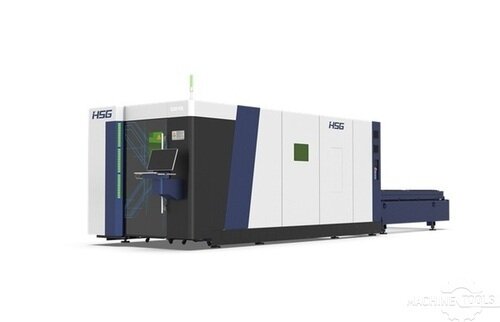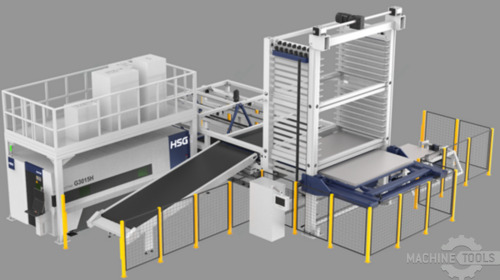In the ever-evolving world of metal fabrication, staying ahead of the curve is crucial for maintaining competitive advantage. One of the most transformative advancements in recent years is the adoption of 2D laser technology. This article delves into how 2D laser technology is revolutionizing metal fabrication, offering unparalleled precision, efficiency, and versatility. By understanding its benefits and applications, businesses can make informed decisions to enhance their production processes and achieve greater customer satisfaction.
Introduction to 2D Laser Technology in Metal Fabrication
2D laser technology has emerged as a game-changer in the metal fabrication industry. Utilizing high-powered lasers, this technology allows for precise cutting and engraving of metal sheets, offering a level of accuracy that traditional methods simply cannot match. The laser beam is directed by computer numerical control (CNC), ensuring that each cut is executed with pinpoint precision, regardless of the complexity of the design.
The adoption of 2D laser technology in metal fabrication is not just about cutting metal; it’s about redefining the possibilities of what can be achieved. From intricate patterns to complex geometries, 2D lasers provide the flexibility needed to meet the diverse demands of modern manufacturing. This technology is particularly beneficial for industries that require high levels of customization and rapid turnaround times, such as automotive, aerospace, and consumer electronics.
The Evolution of Metal Fabrication Techniques
metal fabrication has come a long way from its rudimentary beginnings. Traditional methods such as manual cutting, stamping, and welding have been the backbone of the industry for decades. While these techniques have their merits, they often fall short in terms of precision, speed, and efficiency. The introduction of CNC machines marked a significant leap forward, automating many of the processes and reducing human error.
However, the real revolution began with the advent of laser technology. Initially used for simple cutting tasks, lasers have evolved to handle more complex operations with greater accuracy and speed. The transition from manual to automated processes has not only improved the quality of the final products but also significantly reduced production times and costs. Today, 2D laser technology stands at the forefront of this evolution, offering capabilities that were once thought impossible.
Key Advantages of 2D Laser Technology
One of the most significant advantages of 2D laser technology is its unparalleled precision. The laser beam can cut through metal with an accuracy of a few micrometers, ensuring that each piece is identical to the design specifications. This level of precision is particularly beneficial for industries that require high-quality components, such as aerospace and medical device manufacturing.
Another key advantage is the speed and efficiency of 2D laser cutting. Traditional methods often involve multiple steps and manual intervention, which can be time-consuming and prone to errors. In contrast, 2D laser technology can complete complex cuts in a single pass, significantly reducing production times. This efficiency translates to lower operational costs and faster turnaround times, allowing businesses to meet tight deadlines and improve customer satisfaction.
Applications of 2D Laser Technology in Industry
The versatility of 2D laser technology makes it suitable for a wide range of applications across various industries. In the automotive sector, for example, 2D lasers are used to cut intricate parts and components with high precision, ensuring that each piece fits perfectly within the assembly. This technology also allows for rapid prototyping, enabling manufacturers to quickly iterate and refine their designs.
In the aerospace industry, the need for lightweight yet strong components is paramount. 2D laser technology enables the production of complex geometries that would be difficult or impossible to achieve with traditional methods. This capability is crucial for creating parts that meet stringent performance and safety standards. Additionally, the medical device industry benefits from the precision and cleanliness of laser cutting, which is essential for producing high-quality, sterile components.
HSG G3015X 6KW
HSG-G3015H V2.0-STORE PRO3015 10 SHELF
Comparing 2D Laser Technology to Traditional Methods
When comparing 2D laser technology to traditional metal fabrication methods, the differences are stark. Traditional methods such as mechanical cutting and stamping often involve physical contact with the material, which can lead to wear and tear on the tools and the material itself. This contact can also introduce imperfections and inconsistencies in the final product. In contrast, 2D laser cutting is a non-contact process, eliminating these issues and resulting in cleaner, more precise cuts.
Furthermore, traditional methods typically require multiple steps and manual intervention, increasing the likelihood of errors and inconsistencies. 2D laser technology streamlines the fabrication process by automating many of these steps, reducing the potential for human error and ensuring consistent quality. This automation also allows for greater flexibility in design, enabling manufacturers to produce complex shapes and patterns with ease.
Future Trends in Metal Fabrication with 2D Lasers
As technology continues to advance, the future of metal fabrication with 2D lasers looks promising. One emerging trend is the integration of artificial intelligence (AI) and machine learning with laser cutting systems. These technologies can optimize cutting paths, predict maintenance needs, and improve overall efficiency, further enhancing the capabilities of 2D laser technology.
Another trend to watch is the development of new laser sources and materials. Advances in laser technology are leading to more powerful and efficient lasers, capable of cutting through thicker and more challenging materials. Additionally, the use of new materials in laser cutting systems is expanding the range of applications, making 2D laser technology even more versatile and valuable for various industries.
FAQ
What is 2D laser technology?
2D laser technology involves using a high-powered laser beam to cut and engrave metal sheets with precision and accuracy. The process is controlled by computer numerical control (CNC) systems.
How does 2D laser technology compare to traditional metal fabrication methods?
2D laser technology offers greater precision, speed, and efficiency compared to traditional methods. It is a non-contact process, reducing wear and tear on tools and materials, and it automates many steps, minimizing human error.
What industries benefit the most from 2D laser technology?
Industries such as automotive, aerospace, and medical device manufacturing benefit significantly from 2D laser technology due to its precision, efficiency, and ability to produce complex geometries.
Can 2D laser technology handle thick materials?
Yes, advances in laser technology have led to more powerful lasers capable of cutting through thicker and more challenging materials.
What are the future trends in 2D laser technology?
Future trends include the integration of artificial intelligence and machine learning to optimize cutting paths and predict maintenance needs, as well as the development of new laser sources and materials.
Is 2D laser technology cost-effective?
While the initial investment in 2D laser technology can be high, the increased efficiency, reduced production times, and improved quality often result in significant cost savings over time.
How can I get started with 2D laser technology for my business?
Consulting with a specialist, such as those at Mac-Tech, can help you identify the best 2D laser technology solutions for your specific needs and guide you through the implementation process.
The adoption of 2D laser technology in metal fabrication is not just a trend; it’s a revolution that offers numerous benefits over traditional methods. By embracing this technology, businesses can achieve higher precision, efficiency, and versatility in their production processes. If you’re looking to optimize your metal fabrication operations, consider exploring the possibilities that 2D laser technology has to offer. For expert advice and tailored solutions, feel free to reach out to discuss your needs.
Get Weekly Mac-Tech News & Updates








